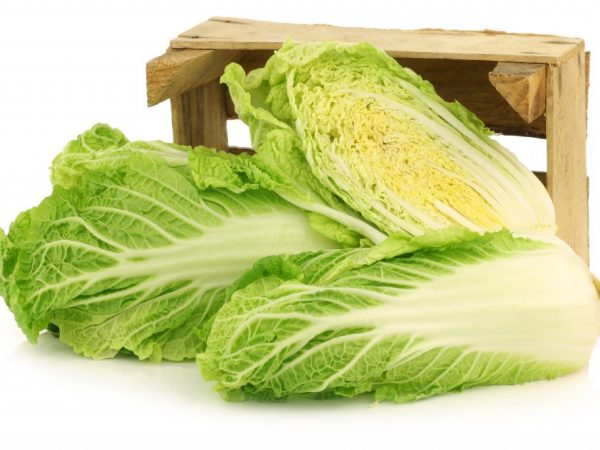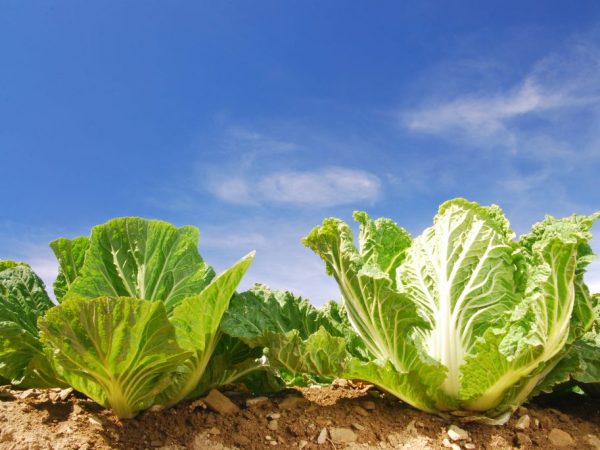Growing Chinese cabbage in the Urals
Peking cabbage is grown in central and southern Russia. This variety can be grown in the northern regions of the country, if you follow the rules of care. We will tell you about the conditions under which Peking cabbage should grow in the Urals in the article.

Growing Chinese cabbage in the Urals
Influence of climatic conditions
The yield of each crop directly depends on the climate in which it is grown. Peking cabbage is no exception. As soon as severe frosts set in, the development of the plant slows down significantly.
The climate of the Urals can be varied. In this region, there can be both hot and frosty weather. All this can negatively affect the crop yield: at high temperatures, the bushes begin to form arrows. As a result, most of the nutrients will be directed to the inflorescence rather than the head of cabbage. If an arrow appears on the plant, then the yield of this bush will be minimal.
In order for the cultivation of Peking cabbage in the Urals to bring high yields, several basic rules should be taken into account:
- water the site on time;
- fertilize regularly;
- you should not transplant the bushes, since this negatively affects their growth;
- choose only soil with a neutral level of acid-base balance: if the level of alkali is more than 4%, lime should be added to the ground.
Existing landing options
The cultivation of Chinese cabbage in the Urals depends on proper planting. It can be carried out in several ways: using seeds or seedlings.
If planted on March 10-15, then the harvest will be in August. For harvesting in the fall, planting should be carried out in early June.
Don't use a shared container. Give preference to planting in separate containers. This will reduce the risk of disrupting the root system during transplantation, otherwise the violation of the roots will lead to slow growth of the bush, and the timing of fruiting will shift by several months.
With the help of seedlings
Planting seedlings in open ground is carried out only after 2-3 pairs of leaves appear on the plant. Planting depth should be no more than 8 cm so that the lower leaves are above the ground. The distance between the rows should be 50 cm, and between the holes about 60 cm.
Seed
The seeds should be planted to a depth of 5 cm. The planting pattern is 40x50 cm. The planting area should be covered with a dense layer of plastic wrap to create optimal conditions for germination. Every day you need to open the film for 2 hours so that oxygen can flow inside. After 20 days, when the first shoots appear, the film can be removed.
Growing rules

Maintain your plants well
Planting Chinese cabbage in the Urals is a complex process. In order for the harvest to be of the highest quality, certain recommendations should be adhered to.
- Pay attention to the lighting.A large amount of sunlight will lead to premature flowering and a decrease in yields, therefore, the cultivation of Peking cabbage in the Urals should be carried out in such conditions that daylight is diffused.
- Temperature conditions. At a temperature of about 28-30 ° C, the culture is shooted. In open ground conditions, it is difficult to normalize the temperature regime, therefore it is better to plant seedlings in places where the shadow periodically falls. If this is not possible, plant it in a greenhouse. Optimum temperature: 20-25 ° C.
- The soil must be pre-treated with a manganese solution (5 g per 10 l of water). For 1 m2 about 7 liters of the drug. Such processing will decontaminate the land and reduce the risk of diseases and parasites.
Care advice
You can grow a quality vegetable crop by following the basic care rules.
- Watering should be once a week. At least 2 liters of warm water should be poured under each bush (for better adhesion to the ground).
- Top dressing should be carried out using organic fertilizers. Mineral components should be discarded, since this can lead to excessive growth of the bush. 15-18 days after planting, humus must be added to the ground (5 kg of fertilizer per 1 m2). With the beginning of the formation of the fetus, humus or bird droppings should be introduced (3 kg per 1 m2).
- After each watering, it is important to loosen the soil and remove weeds. This will allow oxygen and all the necessary nutrients to enter the roots.
Prevention of parasites
To prevent pests from disrupting the amount of yield, several basic measures should be followed:
- sprinkle the bushes with wood ash (from butterflies and beetles);
- add calendula or chamomile tincture to the water for irrigation (400 g per 10 liters of water);
- plant a crop next to garlic, onions or tomatoes - an unpleasant smell will drive away all pests.
Conclusion
There are a huge number of different varieties of Peking cabbage. If you follow all of the above recommendations, you will be able to grow a quality crop.

